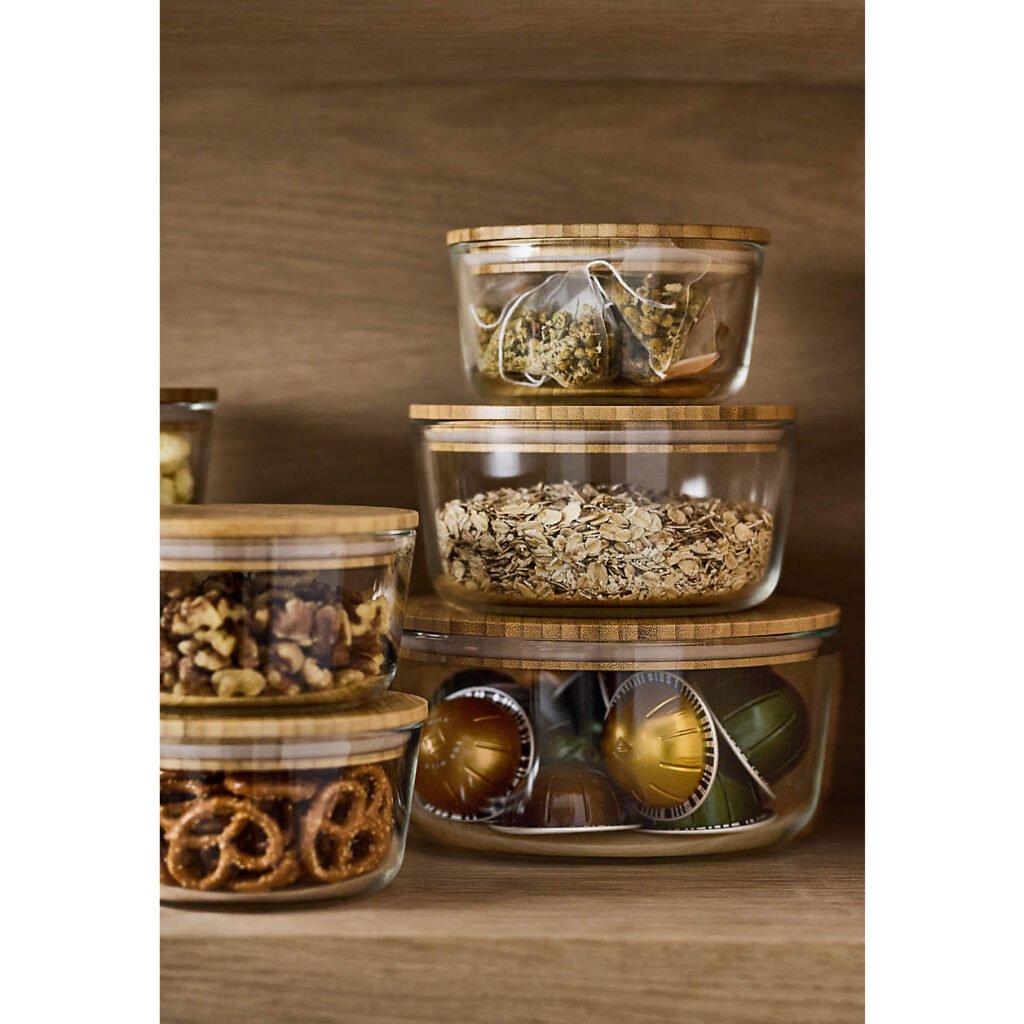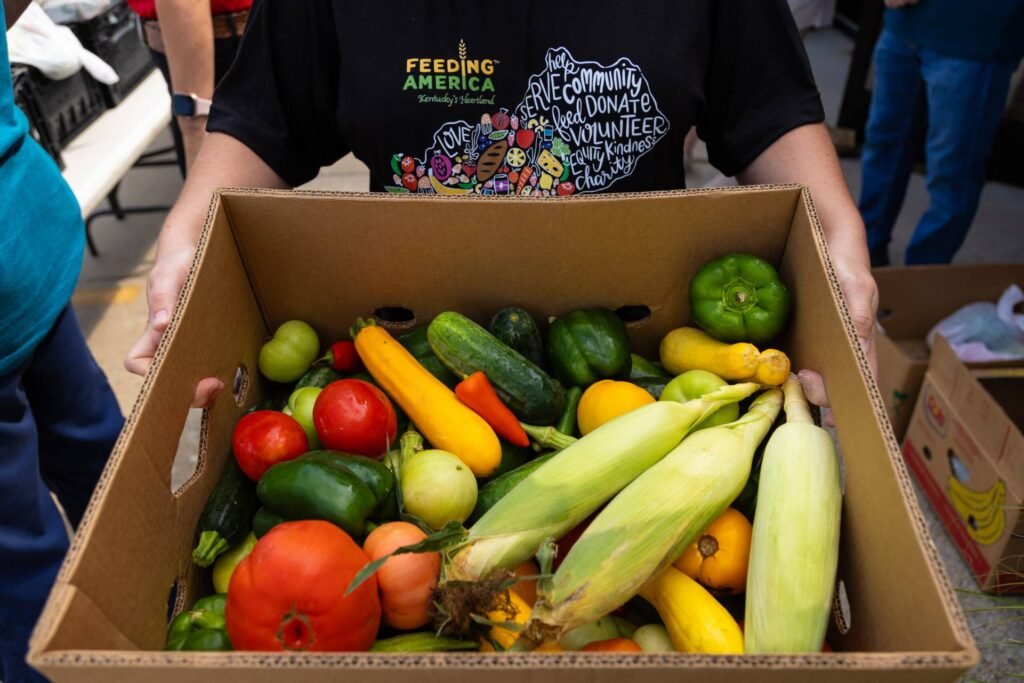15 Smart Food Waste Solutions For The Holidays

Share This Article
Indulge in your favorite meals during the Holidays without contributing to CO2 emissions and landfills with these food waste solutions.
| All products featured on The Wellness Feed are independently selected by our editors for their environmental and ethical impact. However, we may earn an affiliate commission when you buy something through our retail links. |
Tis the season to be joyful and eat. The Holidays are as much about gathering around the table for plates upon plates of food as they are about the gifts we’ll give and receive. But all those plates of food often become something less than joyful- waste. For many of us, we’ll waste more food between Thanksgiving and New Year’s Eve than any other time of year that will amount to more than 300 million pounds of food thrown into landfills. This waste contributes to landfill waste and greenhouse gas emissions. So, this festive season we’re providing practical food waste solutions to make your celebrations eco-friendly.
Plan Your Feasts
When shopping for produce and herbs, bring reusable bags to avoid using plastic produce bags that will turn into waste later.
Thrive Market Reusable Produce Bags are made from 100% certified organic cotton. $15

Make A List
Creating a shopping list is the first step to ensure that you’ll buy what you need and avoid buying food that will only become waste. If you’re hosting, confirm how many guests you’ll have and what meals you’ll serve. For example, if you plan a holiday dinner for eight, list all ingredients needed for each dish. This helps avoid unnecessary purchases and ensures you have everything to create delicious meals.
Shop Consciously
Avoid impulse buys by sticking to your list. Opt for smaller quantities of items you rarely use. For shopping inspiration, consider using a meal planner to visualize your meals for the week. This can prevent last-minute shopping trips that lead to overbuying.
Store Smart
Proper food storage is key to reducing spoilage. Keep fruits and vegetables in designated crisper drawers and wrap herbs in damp paper towels to keep them fresh. Store leftovers in airtight containers to maintain freshness. Use the right storage techniques to keep your food safe and extend its shelf life.
Minimizing Waste Before It Happens

Thrive Market Compost Bin is a compact so you can keep it on your counter to store produce scraps ready to compost. Made from bamboo. $40
Check Portions
Serving appropriate portion sizes can significantly cut down on food waste. Use measuring cups or simply check portion guidelines online to estimate how much food should be offered. This helps ensure guests enjoy their meals without overloading their plates.
Serve Mindfully
Encourage guests to take only what they can eat. Serve meals in smaller portions initially, allowing guests to request more if they’re still hungry. This not only reduces waste but also maintains the quality of the food being served.
Composting
Composting is one of those food waste solutions you can adopt daily to deal with food scraps. Set up a small compost system in your kitchen to gather peelings and leftovers. Not only does this minimize waste, but it also produces nutrient-rich compost for gardens.
Embrace Leftovers
Le Creuset Heritage Stoneware Shallow Square Covered Baker, 2-Qt. is a stoneware dish made to last a lifetime. Use it to make leftover casseroles and to store food in the freezer. $100 ($70)

Repurpose Holiday Fare
Get creative with leftovers! Transform turkey into a hearty soup, or make a delicious casserole with roasted veggies, gravy, and stuffing. Consider making sandwiches or wraps using extra meats and veggies. This can be a fun way to involve the family in the kitchen while reducing waste.
Freeze for Future Feasts
Freezing is a great way to save leftovers for later. Store portions in labeled containers, indicating the type of food and date. This makes it easy to identify and use leftovers on busy days. When freezing, make sure to cool food before sealing to maintain quality.
Feel Inspired
Look for cookbooks or websites dedicated to leftover recipes. Some recipe sites also have sections focused on using leftover ingredients creatively, making it easier to whip up something new with what you have.
Smart Storage and Organization Techniques for Food Preservation

20-Piece Round Glass Containers with Bamboo Lids Set are essential storage containers for any fridge and pantry. These plastic-free containers are built to last and are clear so you can easily see what’s inside. $60
Practice First In, First Out (FIFO)
Organize your pantry and refrigerator using the FIFO method. This ensures older items get used before newer ones, helping to minimize spoilage. Keep expiration dates in mind while arranging your food.
Label And Date
Clearly label and date food items before storing them. This aids in tracking freshness and helps you make informed decisions about what to use next. Using transparent storage containers can also help you quickly see what you have on hand.
Utilize Technology
Consider using apps like Mealime or NoWaste to manage your food inventory and streamline meal planning. These tools can help you track what ingredients are available and suggest meals to make, reducing impulse purchases.
Beyond the Table: Community Involvement and Charitable Giving

Donate, volunteer, and/or help provide meals at your local food bank via organizations like Feeding America.
Donate To Your Local Shelter
Consider donating excess unopened and shelf-stable food to local food banks or shelters. Many organizations are eager to accept non-perishable and prepared goods. Check websites for local resources and guidelines on how to donate safely.
Reach Out To Your Community
Look for community initiatives focused on food rescue or waste reduction. Participating in these programs can connect you with others who are passionate about the same cause, further amplifying your efforts.
Share the Wealth
Don’t hesitate to share excess food with friends, family, or neighbors. You can host a potluck or simply invite others to take home any leftovers. This fosters community spirit while also reducing food waste.
